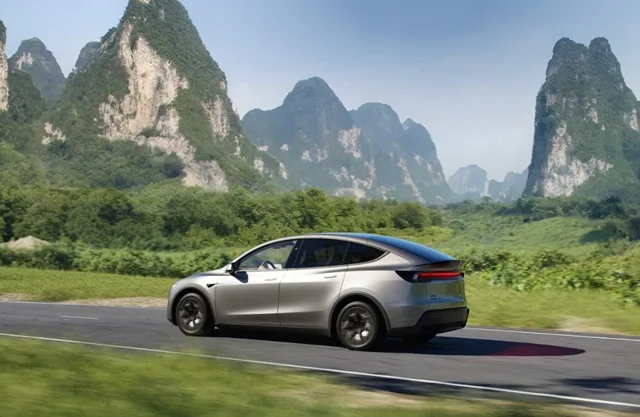
Tesla on Tuesday unveiled its latest model for the Chinese mainland market — the Model Y L, a six-seat sport utility vehicle (SUV) priced from 339,000 yuan ($47,182). The move comes as the U.S. electric vehicle (EV) giant seeks to bolster its position in China’s increasingly competitive new energy vehicle (NEV) sector.
According to Tesla China’s official website, orders for the Model Y L are now open, with deliveries scheduled to begin in September 2025. The model extends the dimensions of the standard Model Y by adding 179 millimeters in length and 150 millimeters in wheelbase, creating a larger cabin that accommodates a six-seat layout.
The Model Y L boasts a China Light Vehicle Test Cycle (CLTC) range of 751 kilometers and an energy consumption rate of 12.8 kWh per 100 kilometers, Tesla said in a press release. To attract buyers, the company is offering financing incentives, including down payments starting at 99,900 yuan with three years of zero interest, or 45,900 yuan with five years of low interest, alongside benefits such as paint credits and free charging.
Wu Shuocheng, a veteran automobile industry analyst, told the Global Times that while Tesla still retains technological strengths, its edge has narrowed in China’s crowded EV market. “Launching more specialized models like the Model Y L is aimed at reinforcing its competitiveness,” Wu said, noting that six- and seven-seat vehicles are particularly popular among Chinese households with multiple children.
However, Wu also emphasized that Tesla faces stiff competition in this segment, with established rivals such as Li Auto’s L8, IM Motors’ LS9, and NIO’s ES8 already targeting family-oriented buyers. “Tesla no longer enjoys a first-mover advantage here, and the sales impact of the Model Y L remains to be seen,” he added.
Industry data reflects Tesla’s challenges. In the first half of 2025, Tesla China’s wholesale sales reached 67,866 units, ranking fourth behind BYD, Geely, and Changan, according to the China Passenger Car Association. Overseas, Tesla has also struggled: UK sales in July fell 60 percent year-on-year to 987 units, while German sales dropped 55.1 percent to 1,110 units, even as overall EV registrations in Germany surged by 58 percent.
Despite these setbacks, Tesla’s Shanghai Gigafactory remains a cornerstone of its global operations. With an annual production capacity of 950,000 units — the highest among Tesla’s facilities — the plant has become the company’s key export hub, supporting record deliveries in markets such as South Korea, Malaysia, the Philippines, and Singapore, Tesla said in its second-quarter fiscal report.
China’s domestic NEV market continues to grow rapidly. In the first half of 2025, the country produced 6.97 million and sold 6.94 million NEVs, both up more than 40 percent year-on-year, according to the China Association of Automobile Manufacturers. NEVs accounted for 44.3 percent of total auto sales — a record high that underscores the accelerating shift toward electrification.
Wu noted that Tesla’s strategy of launching new models aligns with efforts to tap into China’s vast NEV consumption potential. “Competition in the Chinese market is fierce, demanding strong performance in products, technology, and sales strategy,” he said.







